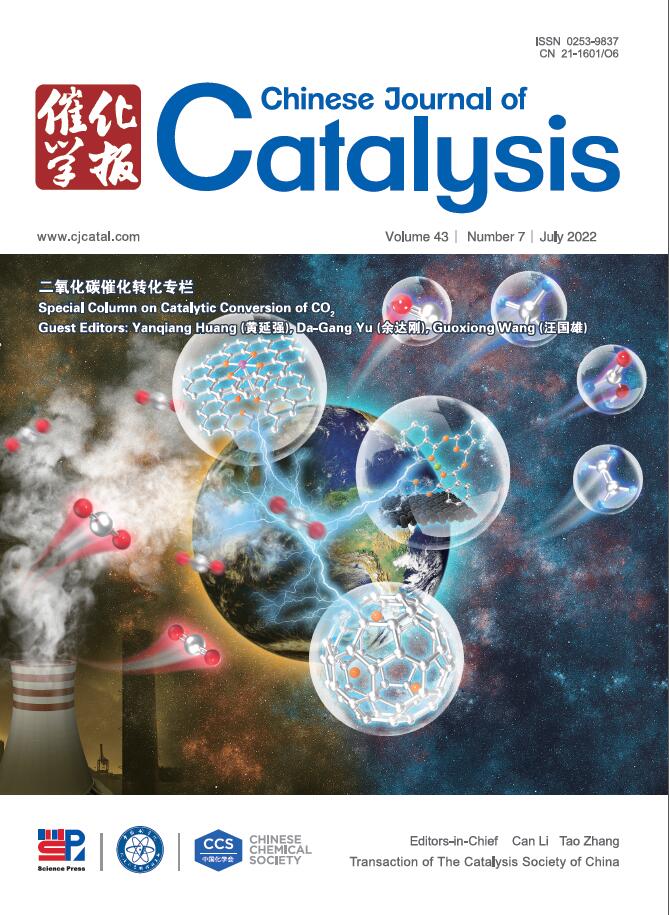The strong Pt-N3O coordination in graphene nanosheets accelerates the 4e− electrocatalytic oxygen reduction process
IF 17.7
1区 化学
Q1 CHEMISTRY, APPLIED
引用次数: 0
Abstract
Single-metal sites anchored in nitrogen-doped nanocarbons are recognized as potent electrocatalysts for applications in energy conversion and storage. Here, an innovative inorganic salt-mediated secondary calcination strategy was developed to construct robust Pt single-atom catalysts on nitrogen- and oxygen-doped graphene nanosheets (Pt-N/O-GNs), thereby significantly enhancing the efficiency of the electrocatalytic oxygen reduction reaction (ORR). The ultrathin N/O-GNs, obtained by stripping Zn-ZIF with auxiliaries of KCl and LiCl, provide stable anchoring sites for highly exposed Pt-N3O active structures. The Pt-N/O-GNs catalyst, featuring a low Pt loading of 0.44 wt%, demonstrates exceptional mass activity in the ORR process. It attains an impressive onset potential of 0.99 V and a half-wave potential of 0.88 V. The zinc-air battery driven by the Pt-N/O-GNs displays superior power density and cycle stability. Theoretical computational studies reveal that the structure of heteroatoms doped in few-layer graphene facilitates the stable anchoring of single-atom configurations. The findings provide new perspectives for the tailored design and fabrication of single-metal-site electrocatalysts.
石墨烯纳米片中pt - n30o的强配位加速了4e−电催化氧还原过程
锚定在氮掺杂纳米碳上的单金属位点被认为是在能量转换和存储应用中有效的电催化剂。本研究开发了一种创新的无机盐介导的二次煅烧策略,在氮和氧掺杂的石墨烯纳米片(Pt- n /O-GNs)上构建坚固的Pt单原子催化剂,从而显著提高了电催化氧还原反应(ORR)的效率。以KCl和LiCl为助剂剥离Zn-ZIF得到超薄N/O-GNs,为高暴露pt - n30活性结构提供稳定的锚定位点。Pt- n /O-GNs催化剂具有0.44 wt%的低Pt负载,在ORR过程中表现出优异的质量活性。它达到了令人印象深刻的0.99 V的起始电位和0.88 V的半波电位。由Pt-N/O-GNs驱动的锌空气电池具有优异的功率密度和循环稳定性。理论计算研究表明,杂原子掺杂在少层石墨烯中的结构有利于单原子构型的稳定锚定。这一发现为单金属电催化剂的定制设计和制造提供了新的视角。
本文章由计算机程序翻译,如有差异,请以英文原文为准。
求助全文
约1分钟内获得全文
求助全文
来源期刊

Chinese Journal of Catalysis
工程技术-工程:化工
CiteScore
25.80
自引率
10.30%
发文量
235
审稿时长
1.2 months
期刊介绍:
The journal covers a broad scope, encompassing new trends in catalysis for applications in energy production, environmental protection, and the preparation of materials, petroleum chemicals, and fine chemicals. It explores the scientific foundation for preparing and activating catalysts of commercial interest, emphasizing representative models.The focus includes spectroscopic methods for structural characterization, especially in situ techniques, as well as new theoretical methods with practical impact in catalysis and catalytic reactions.The journal delves into the relationship between homogeneous and heterogeneous catalysis and includes theoretical studies on the structure and reactivity of catalysts.Additionally, contributions on photocatalysis, biocatalysis, surface science, and catalysis-related chemical kinetics are welcomed.
 求助内容:
求助内容: 应助结果提醒方式:
应助结果提醒方式:


